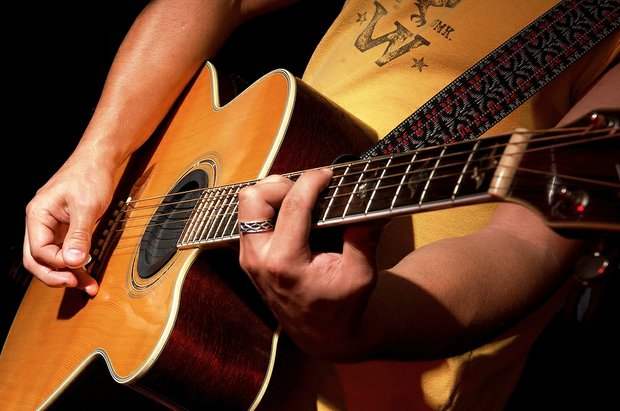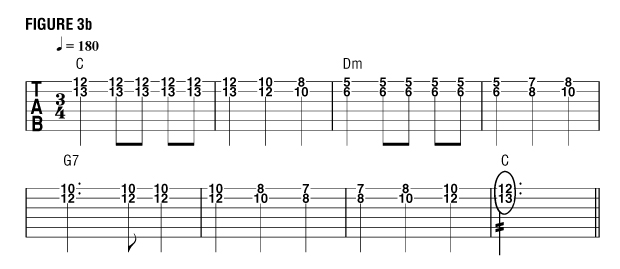The Power of Thirds
Thirds are real workhorses, frequently used by R&B, rock, country and blues guitarists.

In this lesson, we're going to take a look at intervals, and more specifically thirds. An interval’s name specifies the number of scale tones it includes; for example, the adjacent notes C and D form a second, C and E form a third (C-D-E), and so on.
Any two notes can form an interval, but some are more useful than others. Thirds in particular are real workhorses, frequently used by R&B, rock, country and blues guitarists.
To see how diatonic (within the scale) thirds work, play a C major from the second string’s first-fret C p to the 13th-fret octave (Figure 1a). Next, play the C scale from the open E string (the third scale step) up to the 12th fret (Figure 1b). Combine the two scale patterns, and you get a C major scale harmonized in diatonic thirds (Figure 1c). Play the pattern up and down the neck until you can move from one interval to the next accurately and without hesitation.

There is no finer example of diatonic thirds in action than the Spanish-tinged guitar fills played by the late, great Grady Martin in Marty Robbins’ cowboy masterpiece, “El Paso.” The rhythm pattern of “El Paso” is a waltz, which is based on a meter of three beats per bar.
The guitar accompaniment for a waltz is typically a “boom-chick-chick” pattern – a bass note followed by two chord strums (Figure 2). The first beat of each bar is accented, lending the meter a loping triplet feel (one-and-uh two-and-uh, etc.).

The verse’s three chords – C, Dm and G7 – all belong to the key of C, so we can use the same set of intervals throughout. Figure 3a and 3b are third-based melodies in the style of “El Paso.” On the final note of the second example, tremolo picking – rapidly alternating pickstrokes – adds some stylistic flavor.


Martin played thirds in “El Paso” to create a Mexican vibe, but the interval is highly adaptable to any style or scale, including major, minor and modal. For instance, Lonnie Johnson often worked thirds into his sophisticated blues solos back in the Twenties and Thirties, while Chuck Berry’s entire style – and by extension, that of 90 percent of early rock players – is based on his use of thirds. Another big thirds man is John Fogerty – just listen to “Fortune Son,” “Lodi” and “Proud Mary,” among other Credence classics.
Get The Pick Newsletter
All the latest guitar news, interviews, lessons, reviews, deals and more, direct to your inbox!
"Upgrading from your entry-level acoustic opens the door to an entirely new world of tonewoods, body shapes, and brands": 6 signs it's time to upgrade from your first acoustic guitar
"I'm past my prime": 5 common excuses for not learning the guitar – and 5 body and mind-boosting reasons you should







![Joe Bonamassa [left] wears a deep blue suit and polka-dotted shirt and plays his green refin Strat; the late Irish blues legend Rory Gallagher [right] screams and inflicts some punishment on his heavily worn number one Stratocaster.](https://cdn.mos.cms.futurecdn.net/cw28h7UBcTVfTLs7p7eiLe.jpg)


![A black-and-white action shot of Sergeant Thunderhoof perform live: [from left] Mark Sayer, Dan Flitcroft, Jim Camp and Josh Gallop](https://cdn.mos.cms.futurecdn.net/am3UhJbsxAE239XRRZ8zC8.jpg)